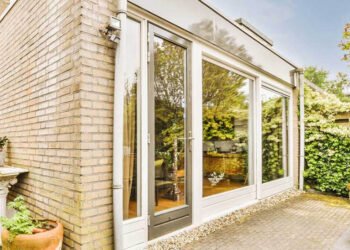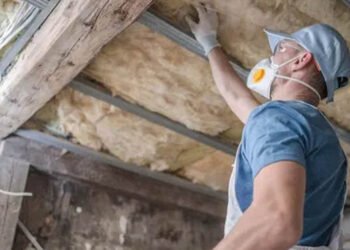Home design and construction are experiencing a significant transformation, driven by a mix of technological innovation, changing lifestyles, and a growing commitment to sustainability.
Modern homeowners are increasingly focused on creating spaces that are functional, environmentally responsible, and adaptable to their evolving needs.
More than 60% of homebuyers consider energy-efficient features and sustainability among their top priorities when choosing a new home.
This shift in priorities shapes the design and build trends that define today’s modern home.
In this article, we’ll explore the top trends transforming living spaces, from innovative technology to eco-friendly materials, and highlight how they are reshaping the concept of home.
Smart Home Integration
Smart home technology is a must-have feature in modern homes, offering convenience, energy efficiency, and enhanced security.
Smart thermostats, like Nest and Ecobee, allow precise temperature control, learning from user habits to optimize heating and cooling, thus reducing energy use and costs.
Voice-activated systems such as Amazon Alexa and Google Home let homeowners manage lighting, appliances, and security through simple commands.
This hands-free convenience is driving the popularity of smart devices in daily routines.
In addition, smart security systems with features like video doorbells, automated locks, and motion sensors allow homeowners to track and secure their property remotely.
Meanwhile, smart lighting solutions can adjust brightness and schedule lights to turn off when unnecessary, adding another energy efficiency layer.
Additionally, many builders are integrating construction management software to ensure that the implementation of smart home technologies is seamless throughout the building process.
This software helps streamline everything from design to final installation, ensuring efficiency and coordination.
These innovations are reshaping how we interact with our homes, blending technology with comfort and sustainability.
They are about efficiency and security and about creating a more relaxing and enjoyable living environment.
Smart Home Integration
The integration of smart technology is empowering homeowners, transforming their living spaces, and offering them greater control, efficiency, and convenience.
These systems seamlessly connect various aspects of the home, putting the power in the hands of the homeowners and making everyday tasks simpler and more efficient.
Here are the key components of smart home integration:
- Smart Thermostats: Devices like Nest and Ecobee learn from your daily routines to adjust temperatures automatically, reducing energy consumption and cutting costs.
- Voice-Activated Systems: With Amazon Alexa, Google Home, or Apple’s Siri, homeowners can control lights, appliances, and security systems using voice commands, offering hands-free convenience.
- Smart Security: Systems, including video doorbells, smart locks, and motion detectors, provide real-time monitoring and alerts. Homeowners can remotely lock doors or check cameras from their smartphones, enhancing safety.
- Smart Lighting: Automated lighting systems let you control brightness, set schedules, or use motion sensors, helping reduce energy use and creating an optimized living environment.
- Energy Efficiency: These smart systems improve comfort and help reduce utility bills by optimizing energy usage and monitoring consumption patterns.
Open and Flexible Floor Plans
Open floor plans are a necessary feature of modern home design.
They promote spaciousness and a natural flow between the kitchen, dining, and living areas.
By removing traditional barriers between rooms, homeowners can create a more inviting and connected living space, perfect for socializing and family gatherings.
Flexibility is also essential as more homeowners seek spaces that can serve multiple purposes.
A living room might double as a home office, or a guest room may become a workout space.
This adaptability allows homes to meet changing needs, especially with the rise of remote work.
Wellness-Oriented Design
The focus on wellness has become a significant trend in modern home design, with more homeowners prioritizing spaces that promote physical and mental well-being.
According to the Global Wellness Institute, the wellness real estate market grew by 22% annually from 2017 to 2020, highlighting the increasing demand for homes designed with health in mind.
Key elements of wellness-oriented design include:
- Natural Light and Ventilation: Large windows, skylights, and open layouts maximize sunlight and fresh air, improving mood, productivity, and comfort.
- Biophilic Design: Incorporating natural elements like indoor plants, wood, and stone helps create a calming environment and reduces stress by bringing the outdoors inside.
- Dedicated Wellness Spaces: Homeowners are carving out areas for personal fitness and relaxation, such as yoga rooms, home gyms, and meditation corners, making it easier to focus on well-being at home.
- Air and Water Quality: Advanced filtration systems for air and water are being integrated to ensure a healthier living environment, free from pollutants and contaminants.
Minimalism and Functionality
Minimalism continues to influence modern home design, focusing on clean lines, open spaces, and clutter-free living.
Homeowners are embracing the “less is more” philosophy, opting for simplicity and functionality in every aspect of their homes.
Streamlined layouts, neutral color schemes, and multipurpose furniture create serene and organized spaces.
Maximizing storage is a key part of this trend.
Built-in storage solutions and hidden compartments keep belongings out of sight, ensuring that even small spaces feel open and uncluttered.
This functional design is about more than aesthetics—it’s about making every inch of the home practical and efficient for daily living, meeting your needs effectively.
Customization and Personalization
Homeowners are also seeking ways to make their spaces uniquely theirs.
Customization is becoming more accessible, from tailored cabinetry and bespoke lighting to personalized finishes and décor.
This trend allows individuals to reflect their style and preferences through unique materials, color choices, or local craftsmanship.
Personalized designs add character to a home and ensure it meets the specific needs of those who live there.
Final Thoughts
The modern home is evolving, driven by trends that prioritize sustainability, technology, wellness, and personal expression.
From eco-friendly materials to smart home systems, today’s homes are designed to be more efficient, functional, and adaptable to changing lifestyles.
This adaptability reassures homeowners that their living spaces can evolve with them, accommodating their changing needs and preferences.
Minimalist aesthetics and flexible spaces emphasize functionality, while customization allows homeowners to inject their personality into every corner.
As these trends continue to shape the future of home design, they reflect a more profound desire for spaces that look good and enhance well-being, comfort, and a sense of individuality.
By transforming spaces, we ultimately create homes that align with how we live today and how we’ll live tomorrow.
Author bio

Name: Paul Miller
Paul Miller is a skilled content writer specializing in construction management topics at MobiClocks. With a keen eye for detail and a passion for the industry, Paul writes engaging and informative articles that cater to professionals and enthusiasts alike.













